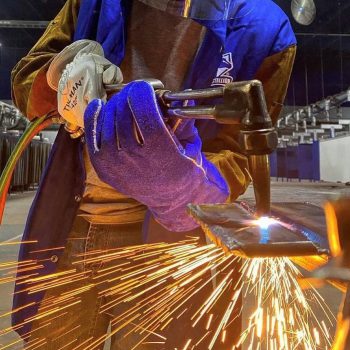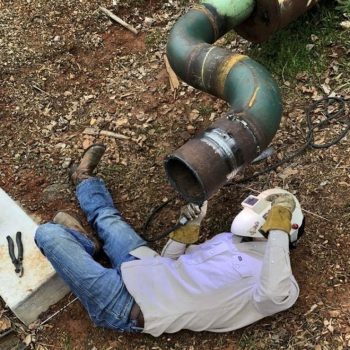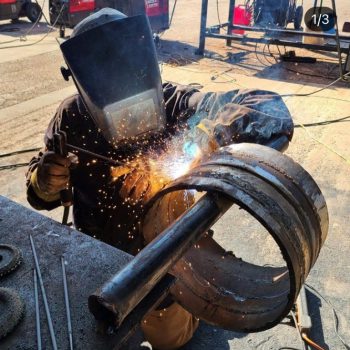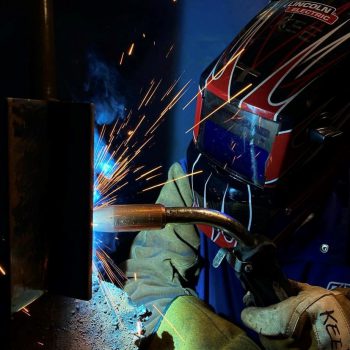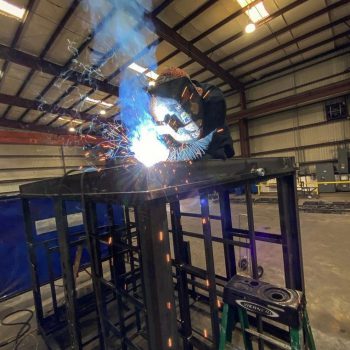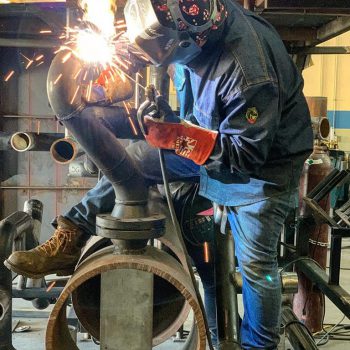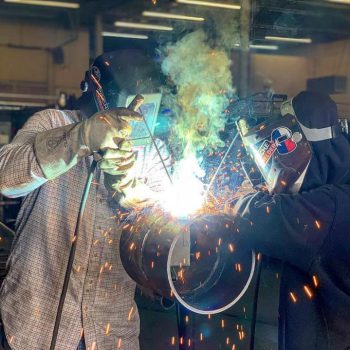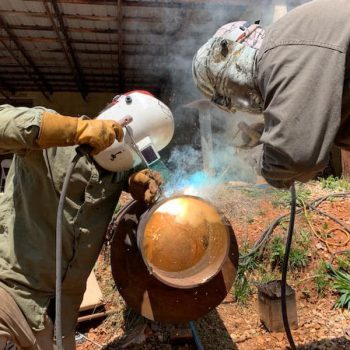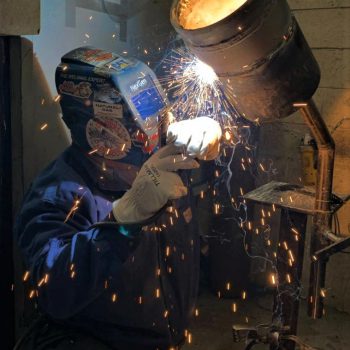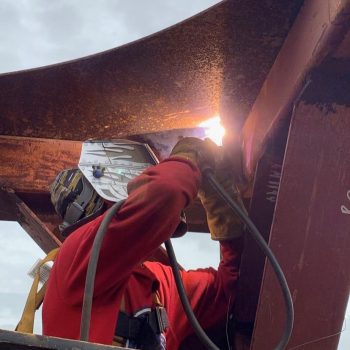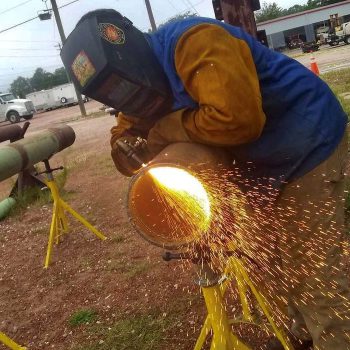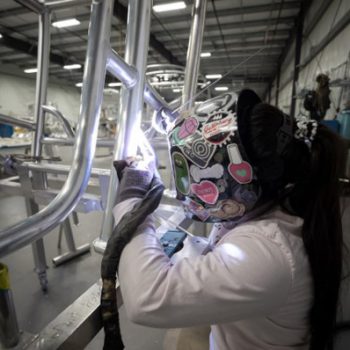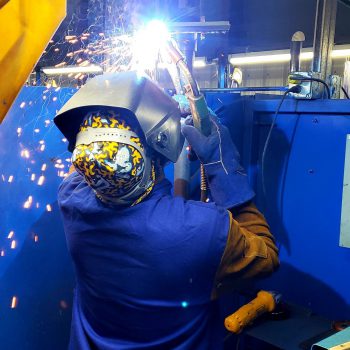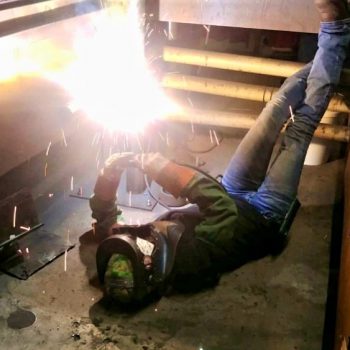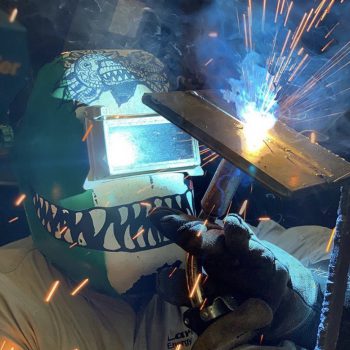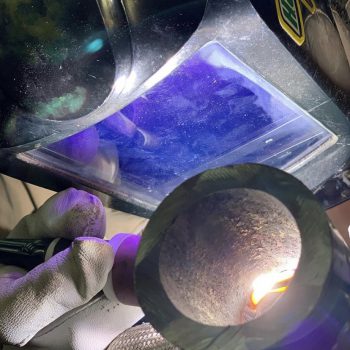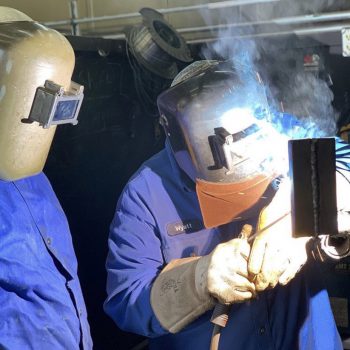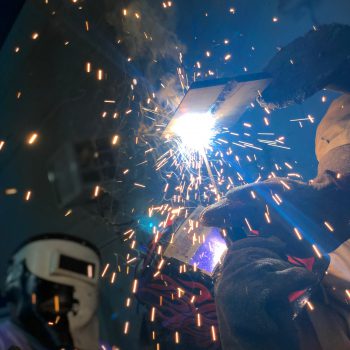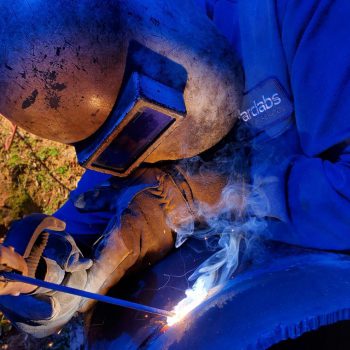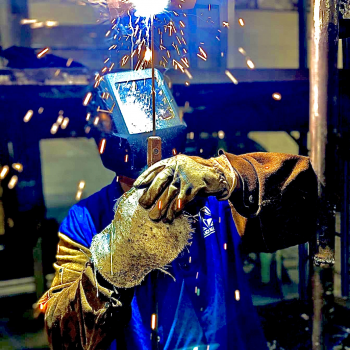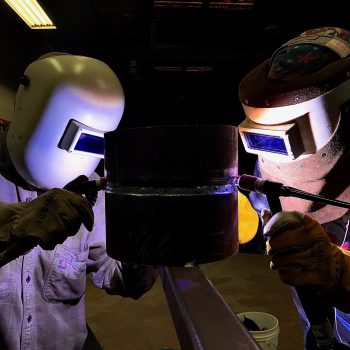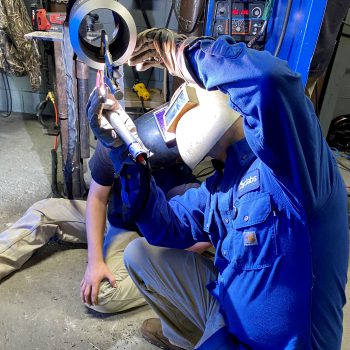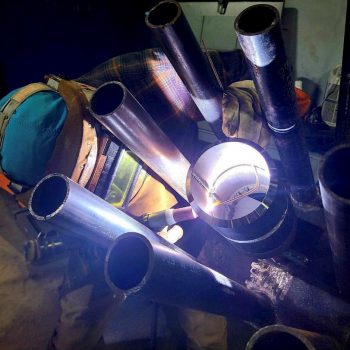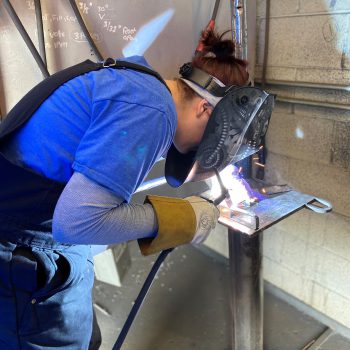In the Hot Seat with Chuck Meek
In the Hot Seat – 10 Questions with Chuck Meek, Arclabs Lead Welding Instructor
Name: Chuck Meek
Title: Lead Welding Instructor, Arclabs Welding School
Location: Charleston Branch Campus, Charleston, SC
Years welding: 36
“Stay hungry. If you ain’t burning, you ain’t learning.”
— Chuck Meek, Lead Welding Instructor
1. How Did You Start in Welding?
“Ultimatums can be motivating. After I graduated from high school, my dad gave me six months to live at home before he gave me the boot. To be fair, he also taught me how to weld at age 13 because we were into truck pulls. I had four years of welding in high school. My dad was a welder and Certified Welding Inspector III. I was on fire watch at the shop, and during lunch break one of his buddies would show me tricks of the trade.”
2. Welding Experience Snapshot
• Stick: “I was welding patch plate with 7018 and then back gouging on the USS Moosebrugger, a destroyer built for the United States Navy in the 70s. It’s still afloat. Making good money at 19 was a good feeling.”
• Flux-Cored: “At 22 I started working for a company that made transformers for big power substations. I remember the weld test was on 3/8-in. plate using an all-position flux-cored wire. Moving from 7018 to flux-cored was tricky at first because I tried to feed the wire into the puddle like I was feeding a rod.”
• MIG: “I did all MIG welding on crane booms with big earth moving buckets. The weld tests were on 3/8th plate.”
• TIG: “I went in as a structural guy welding pharmaceutical skids, but they were getting ready to have a layoff. I had a good work ethic, so they encouraged me to learn pipe welding, and that’s when I got into TIG.”
3. Learning New Skills
“Stay hungry. If you ain’t burning, you ain’t learning.”
“Companies will know when you want it. When I learned TIG welding, some of the other guys took me under their wing because they knew I didn’t want to get laid off. And it wasn’t just my buddy. The QA guys at the facility would, give me pointers. I would take stuff out of the dumpster, prep it myself and use it. I was grateful they gave me the filler metal and time to learn.”
4. Coolest Thing You’ve Done
“Okinawa is beautiful. I would go back there. I’ve been to Japan, Germany, Iraq, Afghanistan, Kuwait City. I’ve been to four continents because a company called Force Protection flew me all over. I worked with them for 12 years building MRAPs, which stands for Mine-Resistant Ambush Protected military vehicles. The MRAPs would go out and scoop bombs with a fork on the front of them. I spent two years in Afghanistan overseeing 12 guys that were part of the repair team.
In my career, I’ve made a little money, and I’ve made huge money. When I was overseas, I couldn’t spend it fast enough.”
5. What Might Surprise Your Students?
“Mortar fire ended my contracting career on January 18, 2010. I was hit in the right side. The Department of Defense says a contractor has to go home if they’re hit in case they think about stuff like retaliation. I needed six months of therapy, physical and mental. They took care of me until my discharge.”
“After leaving Force Protection, I started working in mechanical contracting but wasn’t thrilled with the work. A friend proposed that I consider teaching at Arclabs, and here I am.”
6. Instruction Style
“No student learns the same or at the same pace. Some are geniuses, others have learning disabilities; it’s our job to figure out where they’re at. We need to teach as needed. We are a self-driven school.”
“After a few weeks, we know how students are learning. One of the things we do is encourage students to challenge each other. They’re actually teaching each other, which can be better than an instructor teaching them. Everyone welds differently, so it helps to understand how the other students are doing it, not just the instructor.”
7. Favorite Student Stories
“I had a potential student come in a wheelchair who thought he was never going to get a job as a welder. I said, ‘if you’re willing to learn, we can teach you.’ We fabricated a booth for him to use in his wheelchair. He was nervous, but as soon as he got in there, he just started soaking it in. That student, Larry Phillips, graduated from Arclabs with every process under his belt and is steadily working at the same company where he started when he graduated two years ago.”
8. Arclabs Pride
“Teaching according to student needs means individual attention, so we pay attention to the numbers. The student-to-instructor ratio never goes over 20:1 here. We’ll hire adjuncts and part-time instructors if we need to, and all those instructors need to pass critical weld tests before they’re allowed to teach.”
9. Student Placement
“We work hand-in-hand with companies around the Charleston area. We know their Weld Procedure Specifications. If we know that student wants to go to a certain company, we can guide them so they’ll have all the knowledge they need to pass the certification test and be working that following Monday.”
10. Certifications and More
Instructor certs
Chuck, please add certifications for AWS standards or types of materials/processes on which you’ve been certified or had to pass a weld test. Can be something like
AWS D1.1 7018 and FCAW in all positions, unlimited thickness;
ASME Sec. IX SMAW 6G open root, 6G FCAW, unlimited thickness;
ASME Sec. IX 316L FCAW and more
Earl provided this – a tad less formal but easier for everyone to remember what they’ve done over the yeras
Here are some codes I’ve had certs up to but not limited to…meaning these are off the top of my head.
ASME B31.1 Power Piping
ASME B31.2 Fuel Gas Piping
ASME B31.3 Process Piping
ASME B31.4 Liquid Transportation of Hydrocarbons, LP Gas, Anhydrous Ammonia, and Alcohol
ASME Section IX
AWS D1.1 Structural
AWS D1.2 Aluminum
AWS D1.3 Sheetmetal
AWS D1.4 Reinforcing Steel
AWS D1.5 Bridge welding
AWS D1.8 Seismic supplement to AWS D1.1
AWS D1.9 Titanium structural
AWS D18.1 Hygienic Stainless Steel
Welding experience on ferrous and non-ferrous alloys are as follows but not limited to….
Carbon Steels A36
Stainless Steels, 200, 300, and 400 series
Duplex 2491
Super Duplex 2596
Chromes Steels P9, P11, and P22
Aluminum 4043, 5356, and 6061
Copper
Molybdenum
Nickel Alloys Monel, Inconel, and Hastelloy
Low Alloy 20
Waspaloy
Titanium HI and Low grade
Platinum
Bronze silicon
More on our instructors
[wpu_silo links=’35’]
 877-647-4111
877-647-4111
